Have you been staring at same barren bit of backyard dirt for the past year? Hey, we've all been there. You say you're too busy, admit you're lazy, argue you don't have enough space, or maybe think you're just terrible at gardening. Mother Nature has heard every excuse in the book, and that lady has some brilliant fixes up her sleeve for the black thumbs among us. With a little elbow grease, it's fairly simple to create a beautiful garden that won't require much (if any) care.
First things first though: Get rid of the notion that there's a type gardening that doesn't require work. No matter what, you'll have to put at least a little effort in. It's inevitable with gardening — and part of what makes the final result so sweet. If you do it right, and do your research, you'll end up saving time and money on exterior maintenance and care.
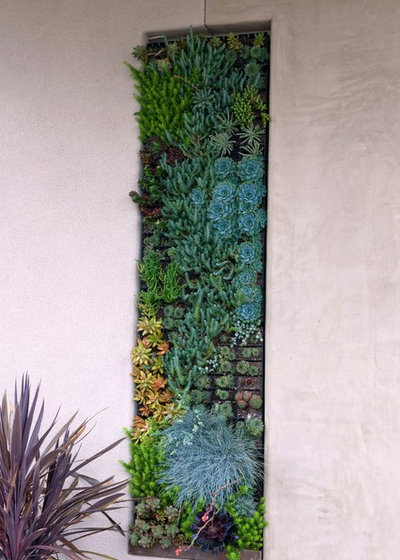
debora carl landscape design
1. Try xeriscaping. A fancy term for low-water landscaping, xeriscaping is all about using plants that can withstand extremely dry (or drought) conditions. Even if you don't live in the desert, a well-planned xeriscape can save you a significant chunk of change and time when it comes to maintaining your garden. Of course, succulents are a natural and obvious choice for this. There are hundreds of varieties, they're beautiful, easy to plant, and even easier to take care of. This vertical garden brilliantly landscaped with succulents offers an unexpected splash of green in an otherwise stark outdoor area.
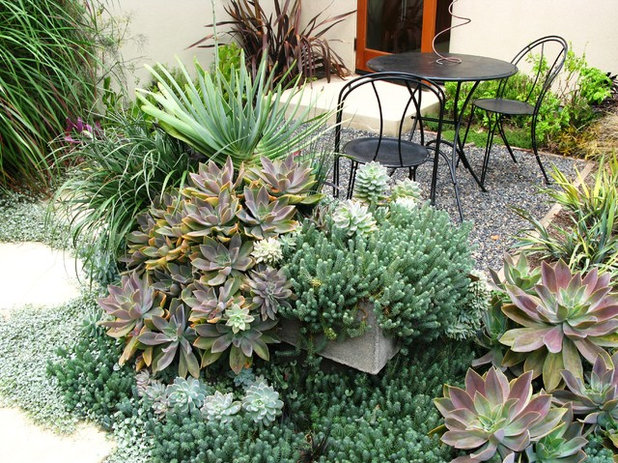
debora carl landscape design
Succulents are also great because you can allow them to grow wild. Most varieties won't require much pruning or upkeep. These plants rarely look unkept — even when spilling out of planters or onto sidewalks, they look cultivated and purposeful.
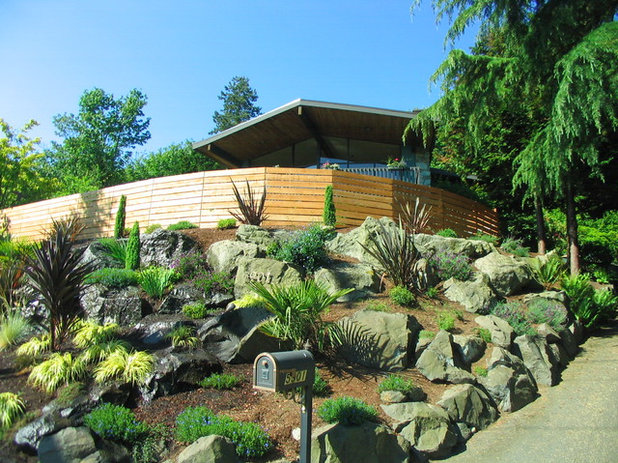
Motionspace Architecture + Design
As much as we all love the idealized American vision of a kelly-green lawn, grass is difficult to maintain and expensive to water, fertilize, and aerate. If investing that much into your front yard sounds terrible, consider clearing the space and creating a rock garden. This is a great way to fill an outdoor space, and if you plant sturdy perennials, you won't have to do much but enjoy their beauty.
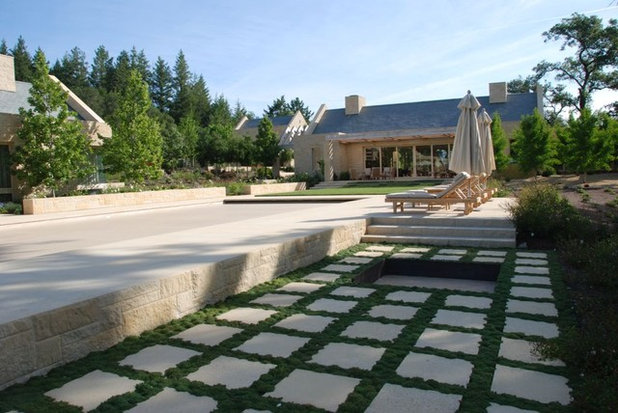
Frank & Grossman Landscape Contractors, Inc.
If you're looking for a bit more green, moss or clover can be a great grass alternative. Both grow fairly quickly but don't need to be mowed. They are insect-resistant, don't need fertilizer, and rarely need water. Honestly, once you know that, why would you ever choose grass?
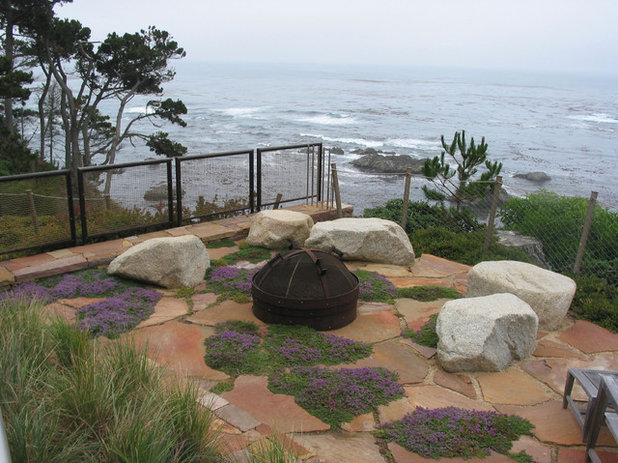
Randy Thueme Design Inc. - Landscape Architecture
Flagstone pavers are used here as a form of ground cover around an outdoor firepit. For a splash of color, the landscape architect planted a beautiful perennial creeping thyme between several of the stones.

Garrett Churchill Inc.
If you're really stuck on the idea of having a plant that requires a lot of water, creating a small pond or bog could save you a lot of watering time (and money) in the long run. Be sure to only do this for plants that really need a lot of moisture, otherwise the wet area could actually overwater and kill them.
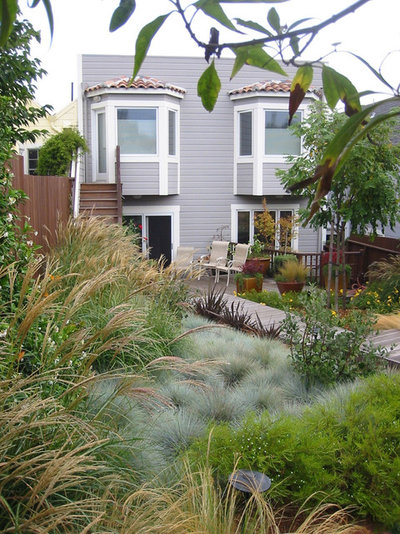
Arterra Landscape Architects
2. Go for the natural look. The less it's supposed to look groomed means less upkeep for you. As always, you want to look for plants that are easier to maintain naturally, in that they require little soil, fertilization, watering, or a certain type of exposure. Try not to choose something that's going to grow or spread quickly. Many natural grasses require little pruning and care. Look for non-invasive varieties suited to your climate.
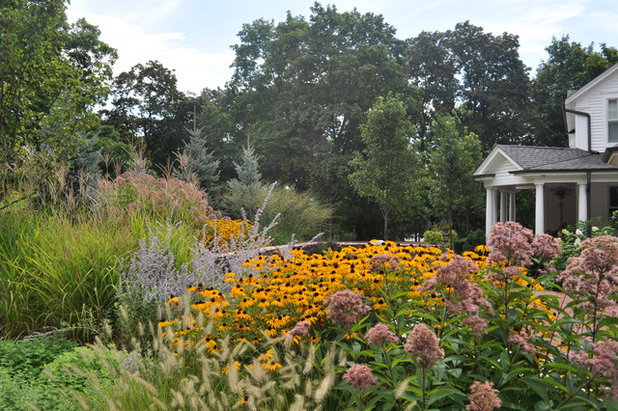
Milieu Design
If you're looking to add blooms to your backyard, flowers like Black-eyed Susans and Jupiter's Beard grow well without much effort. Avoid taller vegetables and flowers, since their heavy fruit and blooms often require caging and wiring for support. You might avoid delphiniums or hollyhocks, for instance. While they're absolutely gorgeous, they can require constant protection, rich soil and staking.
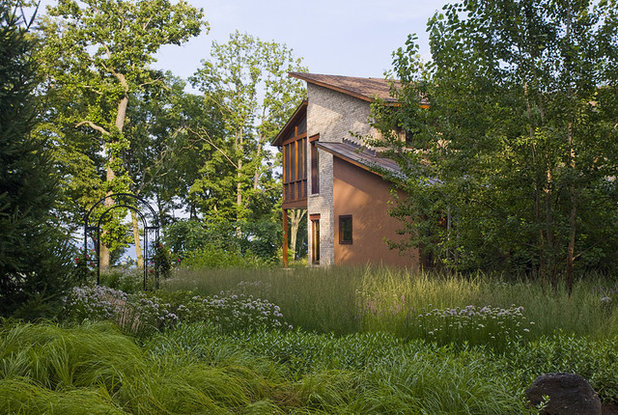
The Garden Consultants, Inc.
A self-sustaining meadow is the ultimate natural and low-maintenance garden. Before going crazy with wild grasses and flowers, plant a thick ground cover. This tends to work particularly well in weedy areas, since it prevents weed growth. But be sure to start the ground cover in weed-free soil first, otherwise the plant will have to compete while it's adjusting to its new home. In the late fall, after the flowers and grasses have spread their seeds, the meadow can usually be mowed down entirely, allowing it to grow back throughout the following year. Don't forget to compost!
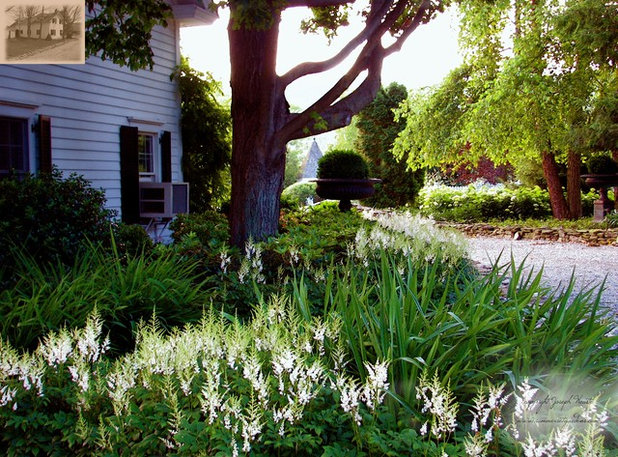
Summerset Gardens/Joe Weuste
Ground cover can take shape in many forms, including flowers, shrubs, and creepers. Fuss-free options include wild ginger, creeping junipers, ground cover roses, and — like in the photo above — daylilies and white astilbe. Pay attention to exposure for these before planting. Just because they're easy to grow and maintain doesn't mean it's a free-for-all.
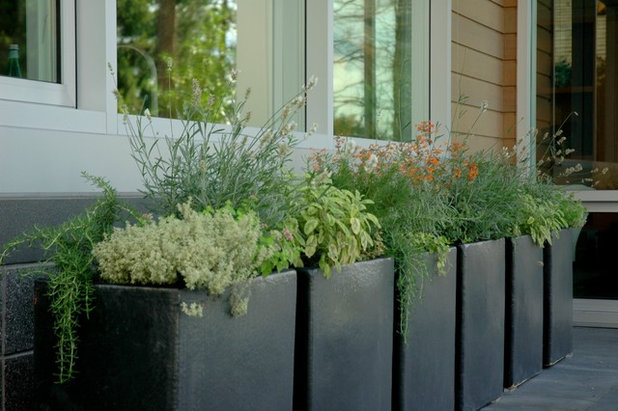
ModernBackyard
3. Plant a container garden. Although grasses are much easier to maintain, if you really want flowers to brighten up your backyard, perennials are a safe bet. Although annuals do tend to do well in container gardens, they need to be replanted each year. Container gardens are great because they allow for a ton of versatility. You can mix various types of plants together (as long as they have the same water and sun needs) and avoid the issues that come with poor soil. Here a combination of herbs create a rich palette of texture and color.
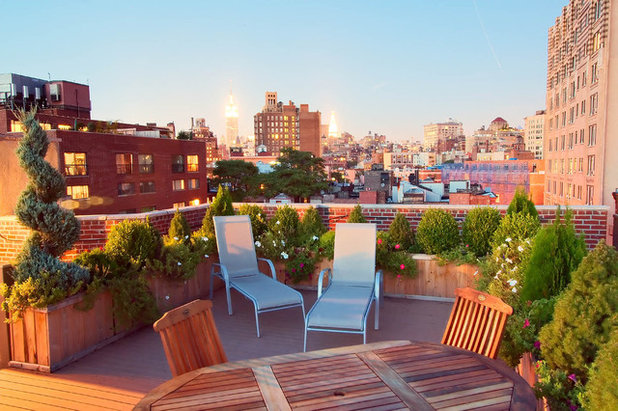
These wooden plant boxes contain a variety of dwarf shrubs and other slow-growing plants. Not only are these plants fairly durable, but their slow growth rate means you'll rarely need to do any trimming.
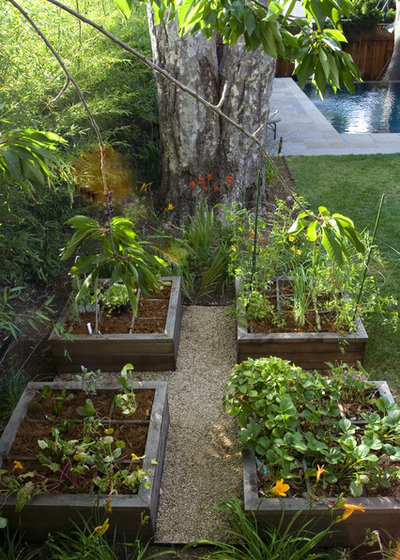
Shades Of Green Landscape Architecture
If you have the space, raised garden beds are another type of container garden that can bypass the irritating poor-soil problem that plagues many novice gardeners. Building a raised bed can be much easier than mulching your entire backyard or digging through packed clay.
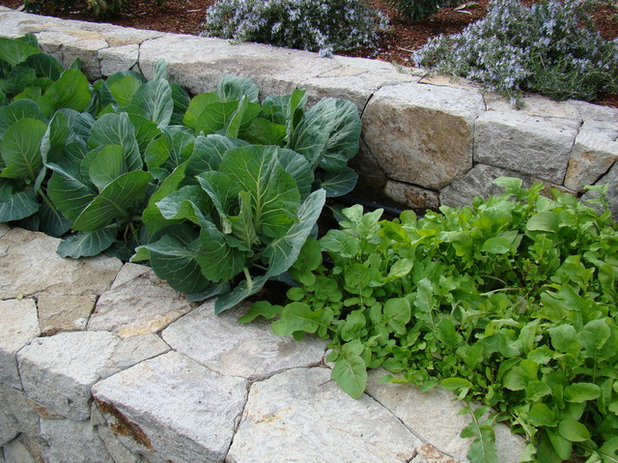
Randy Thueme Design Inc. - Landscape Architecture
Stone raised beds are a good substitute for traditional wooden-framed raised beds. The levels actually save a little space, while still allowing you to grow a variety of plants, just like a standard container garden. A timed irrigation system could easily be installed in this area, completely eliminating any need for watering by hand.
Next, see two fun container options for small spaces.
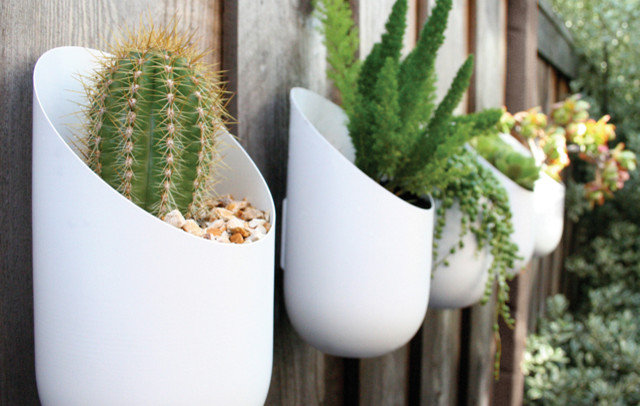
Walter
Wallter Outdoor Planters - $72
Of course, the best part about a container garden is that you really don't need much space at all to add a little bit of green. There are many options for displaying container plants, including containers hung from a fence …
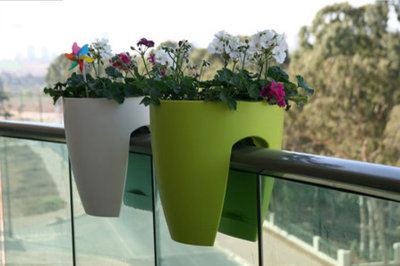
A+R
Railing/Balcony Planter Product Detail - $28
… or on a balcony railing. Modern garden stores have learned to cater to the urban gardener, so there are a lot of creative container options out there.
Next: Unexpected Edible Gardens
Browse more garden and outdoor products





